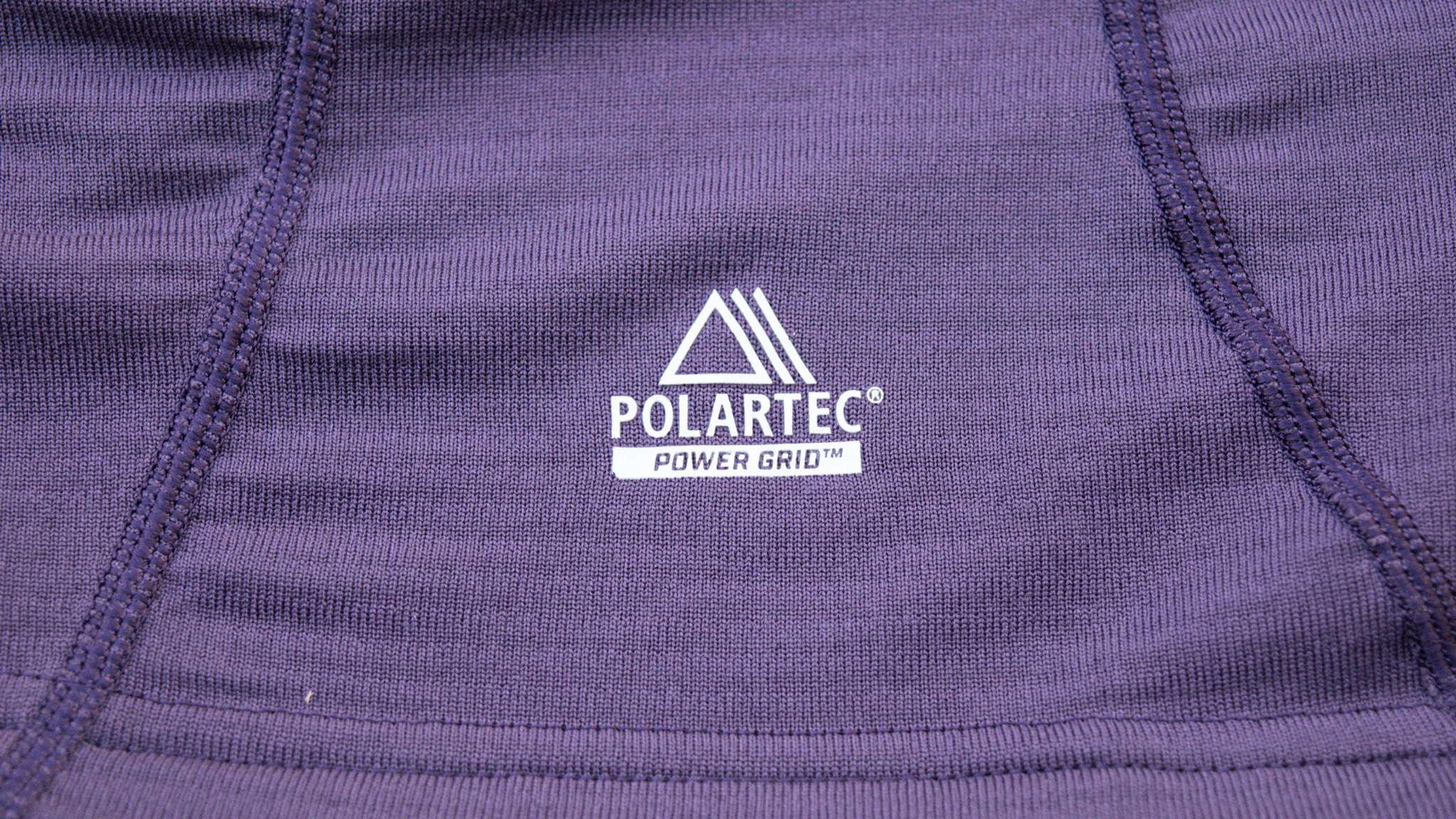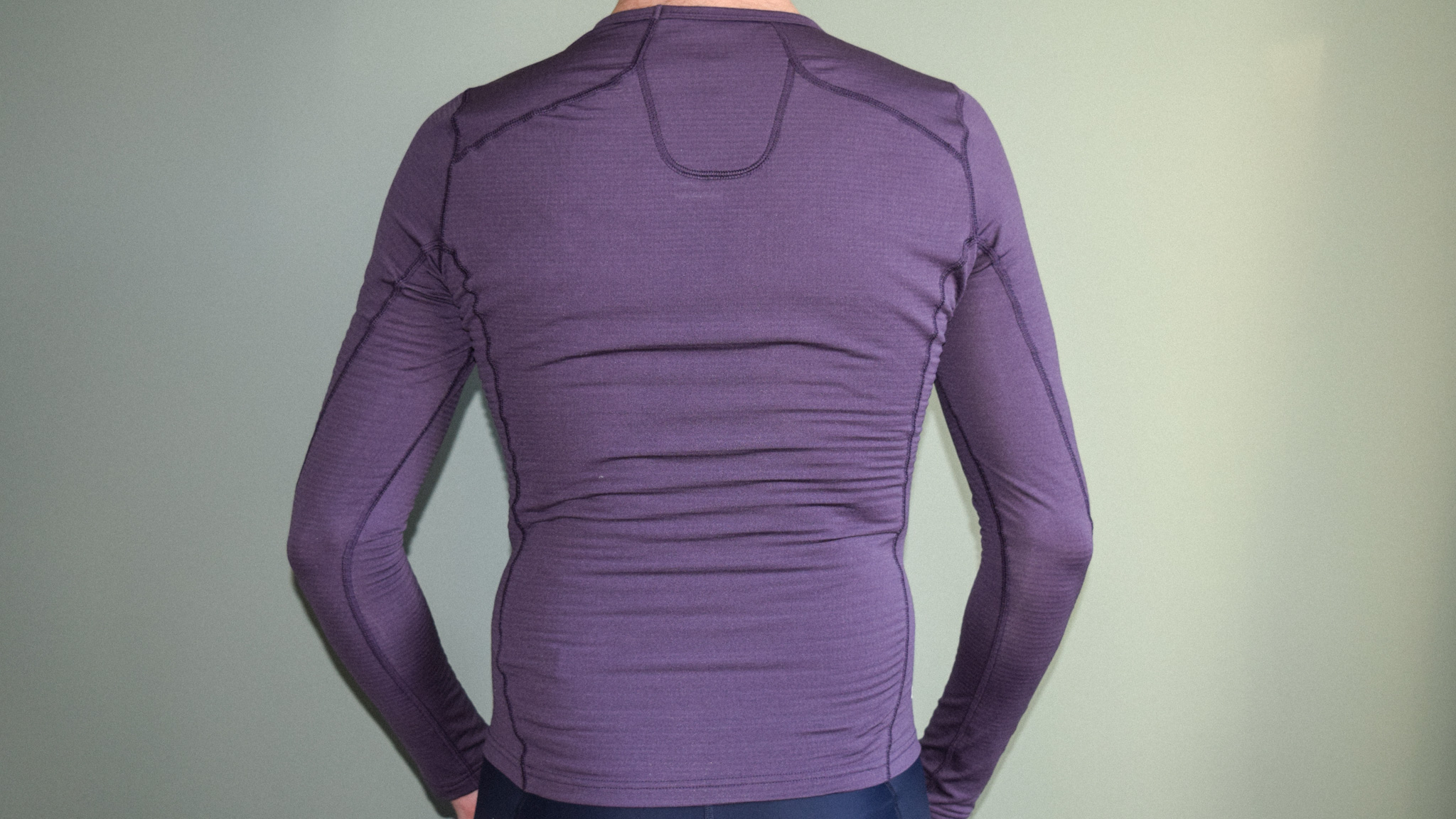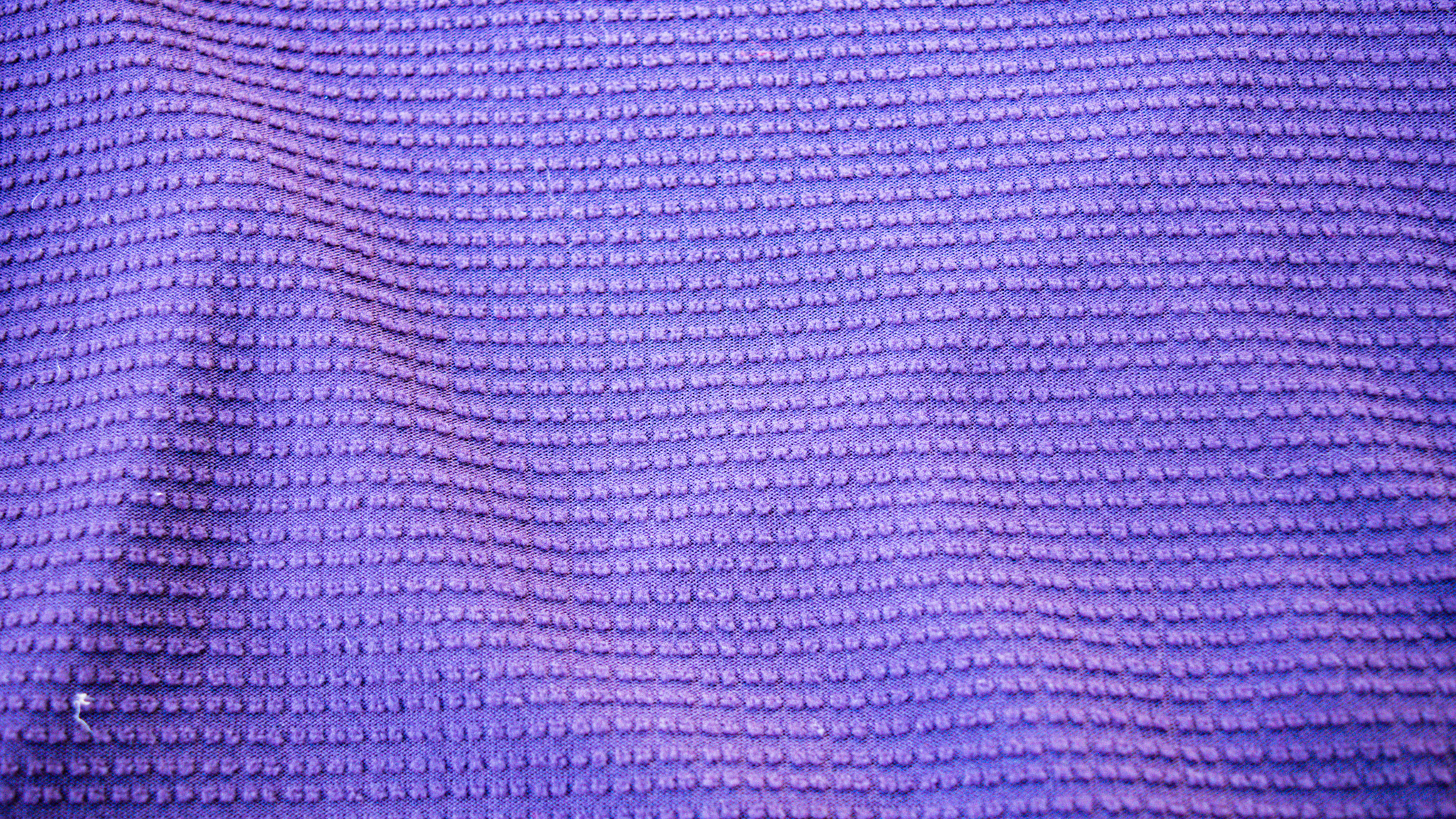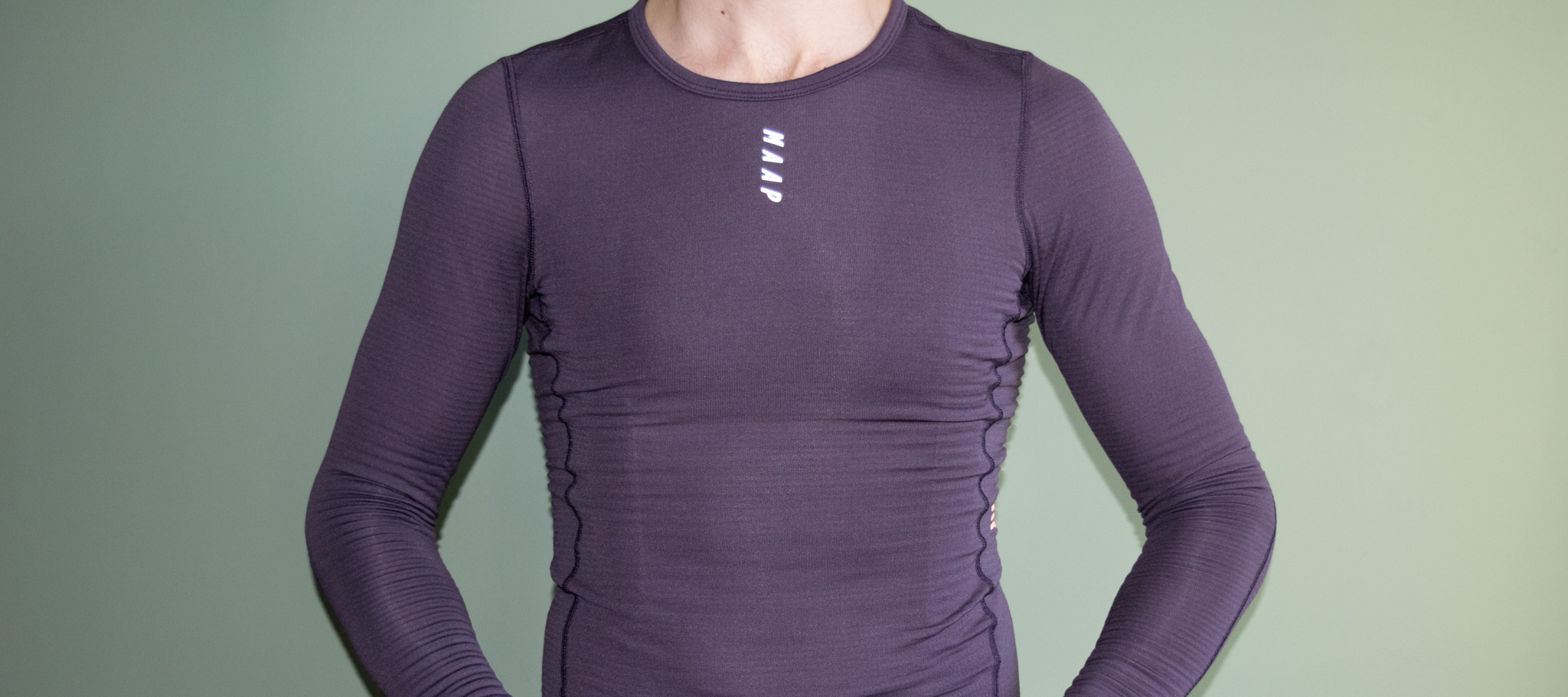Cyclingnews Verdict
It's a little on the expensive side, but the Maap Thermal base layer will keep you really dry and warm. It may be a perfect option for harder efforts or to keep things light if you want to avoid excess winter kit bulk
Pros
- +
Polartec Power Grid material adds both warmth and breathability
- +
Soft and comfortable fabric
- +
Four interesting colourways
- +
Men's and women's versions are available
Cons
- -
On the more expensive end of the spectrum
You can trust Cyclingnews
I've been wearing the MAAP Thermal long-sleeve base layer regularly during my winter rides. Spending the last few months testing a range of long-sleeve and winter base layers and trying various kit combinations each time I've headed out the door, in a bid to overhaul our best cycling base layers guide.
Price: £75 / $100 / 50 AUD / €120
Materials: 91% Polyester 9% Elastane
Available Sizes: XS-XXL
Colours: Nightshade, Black, Fog, Mix
One thing I've learned is that base layers can make or break a cold ride. I really like heading out into the cold in a nice warm base layer, it helps me mentally to know I'm using the right tool for the job. I've spent a good amount of time riding in the Maap Thermal base layer this winter from long steady rides in the cold to more intense club runs and have been impressed with what I've found.
The long sleeve Thermal base layer from Maap sits just under the Deep Winter base layer - the brand's warmest offering - in the Maap lineup. It's a medium-weight base layer with long sleeves and comes in at £75 / $90.

Design and Aesthetics
The Thermal base layer is constructed from 91% Polyester and 9% Elastane and uses the Power Grid material from US-brand Polartec. This is a patented fabric technology that, in essence, features a raised grid of small fleecy squares to increase warmth and breathability, in this case all over the inside of the base layer.
The grid design is meant to create air channels to aid warmth but the raised fibres are also claimed to transport moisture away from the skin to the outside of the base layer, keeping the wearer dry and comfy. Maap lists the Thermal base layer's temperature range as being between -10C/14F to 10C/50F, which is a pretty wide range.
It's a lightweight material and the base layer isn't a thick, heavy-set affair. It's fitted and reasonably tight but is light and will work well beneath race-fit layers.
The fabric used is also Bluesign-approved. If you aren't familiar with Bluesign, it sets a standard for sustainable textile production and products carrying this mark mean they meet this sustainability standard. In the event of a crash, Maap does offer a crash replacement policy offering a healthy 40% discount on replacement kit.
The Thermal base layer comes in four colours, and not the traditional black and white you can expect from most base layers. Here you can choose from: Nightshade, Fog, Mix (red, black, purple, cream) and finally black. You better make sure you get your outer layers unzipped at the cafe if you want your riding mates to see these snazzy colours. It features subtle Maap logos and a Polartec logo just above the front hem.
The neck has a slight scoop to it, so if you do prefer a taller neck, I'd recommend Rapha Pro Team Thermal or the budget-friendly Galibier Barrier. In my size small the fit was good, with the arms extending down comfortably over the wrists and there was enough hem to tuck into tights without excess bunching. Seams are low profile and unobtrusive and run down the sides of the torso, shoulders and neck.
The Maap Thermal base layer is very soft and does feel like a premium product in line with its fairly high price tag.

Performance
I enjoyed riding in the Thermal base layer from the off. I found it to be really comfortable and soft to wear, but the warmth it provided was really surprising, the Polartec material certainly does what it promises.
One of my first rides in the Thermal was a morning where I set off at around 5C/14F and finished at around 10C/50F. With a windproof winter jacket on top, I ended up overheating a bit at the end of the ride and the Thermal felt really warm, too warm in fact. It more than holds its own down to freezing temperatures and wicks sweat and moisture really well. If you're looking for a base layer to handle freezing weather the Thermal will be more than up to the job.
Its lack of bulk means it will also really suit riders who like to dress on the lighter side or achieve the right warmth with a few thinner layers. It will go unnoticed under tighter long sleeve jerseys or jackets.
It's also washed well over the winter, and I can't see any signs of the Power Grid squares losing their shape or lying flat thus far.

Verdict
The Maap Thermal long-sleeve base layer is a really capable piece of kit. It's stylish and it was refreshing to wear the Nightshade (purple) colour, even if only I saw it. As mentioned, as base layers go it is moving toward the more expensive end of the spectrum, but the Power Grid fabric does a brilliant job of keeping the wearer warm and transporting moisture away from the body without adding excessive bulk. I was surprised at how dry I - and the base layer itself - was when I checked at the end of each ride with it.
I'd have no qualms about using it as my starting point for the coldest days on the bike. It has stood up to washing and is supported by the Maap crash replacement policy should the worst happen.
| Design and Aesthetics | Styish, and the Power Grid material works well and allows for a lighter weight garment to be produced | 8/10 |
| Value | In the 'expensive' category for a base layer but it does work very well | 7/10 |
| Sizing | True to size with ample stretch | 8/10 |
| Warmth | Kept me warm on the coldest days | 9/10 |
| Comfort | Very soft and comfortable | 8/10 |
| Overall | Row 5 - Cell 1 | 80% |

Tom joined the Cyclingnews team in late 2022 as a tech writer. Despite having a degree in English Literature he has spent his entire working life in the cycling industry in one form or another. He has over 10 years of experience as a qualified mechanic, with the last five years before joining Cyclingnews being spent running an independent workshop. This means he is just as happy tinkering away in the garage as he is out on the road bike, and he isn’t afraid to pull a bike apart or get hands-on with it when testing to really see what it’s made of.
He has ridden and raced bikes from an early age up to a national level on the road and track, and has ridden and competed in most disciplines. He has a keen eye for pro-team tech and enjoys spotting new or interesting components in the wild. During his time at Cyclingnews, Tom has already interviewed some of the sport's biggest names including Mathieu van der Poel, Tadej Pogačar and Alberto Contador. He's also covered various launches from brands such as Pinarello, Ridley, Specialized and more, tackled the Roubaix Challenge sportive aboard his own rim-brake Cannondale SuperSix Evo, tested over 20 aero helmets in the wind tunnel, and has created helpful in-depth buying advice relating to countless categories from torque wrenches to winter clothing.
